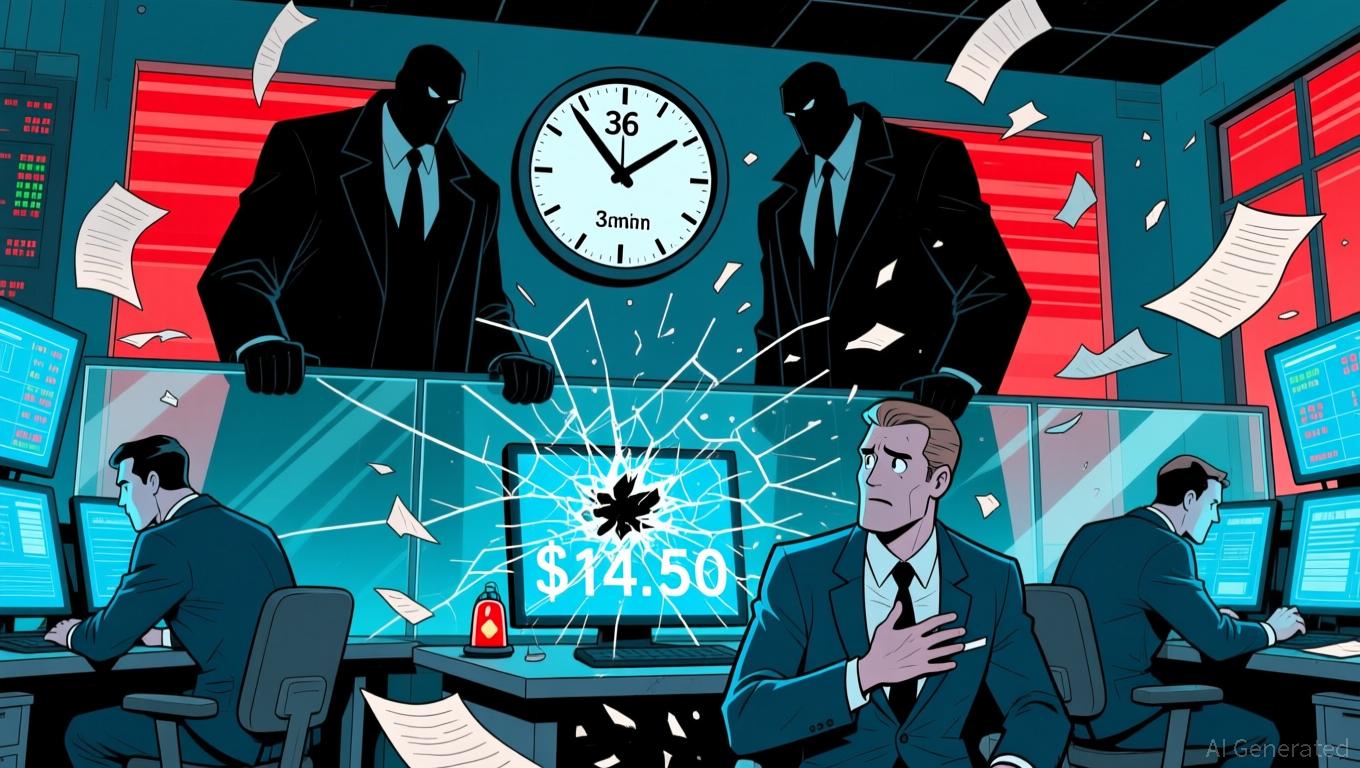Tether Drives Robotics' "iPhone Moment" by Investing $1.16 Billion in Humanoid Robots
- Tether , issuer of the world's largest stablecoin, plans to lead a €1 billion investment in Neura Robotics, a German humanoid-robotics firm, valuing it at €8-10 billion as part of its AI and automation expansion. - The move aligns with Tether's strategy to diversify its $135 billion in U.S. Treasury reserves and $12 billion in gold into high-growth technologies like AI and robotics. - Neura Robotics, aiming to scale to 5 million units by 2030, has already secured €1 billion in pre-orders and $140 million
Tether Holdings Ltd., the company behind the world’s largest stablecoin, is reportedly in advanced negotiations to spearhead a €1 billion ($1.16 billion) investment in German humanoid robotics startup Neura Robotics, marking a significant move into artificial intelligence and automation.
This initiative fits with Tether’s ongoing efforts to broaden its massive reserves beyond cryptocurrencies. Having earned more than $10 billion in profit in the first nine months of 2025, Tether has been actively channeling funds into AI infrastructure, energy ventures, and commodity lending.

Tether’s involvement in the field increases competition with established names like Tesla, which is also pursuing large-scale production of general-purpose robots. The stablecoin leader’s backing could help Neura accelerate its path to market, offering vital funding to expand manufacturing and enhance its AI-driven robotics platform.
Although the agreement has not been finalized, insiders suggest it demonstrates Tether’s strong belief in emerging technologies. At the same time, the company is seeking $20 billion in new funding at a possible $500 billion valuation and is increasing its investments in
Tether’s move into robotics underscores the growing intersection between crypto finance and traditional tech innovation.
Disclaimer: The content of this article solely reflects the author's opinion and does not represent the platform in any capacity. This article is not intended to serve as a reference for making investment decisions.
You may also like
Bitcoin News Today: Bitcoin ETFs See $1.1B Outflow, While New Investments Flow Into XRP and Solana Funds
- U.S. Bitcoin ETFs lost $1.11B in three weeks, with BlackRock's IBIT and Grayscale's BTC leading outflows amid Bitcoin's six-month low at $95,200. - Analysts link redemptions to macroeconomic uncertainty and profit-taking after October's $126,000 rally, while Harvard tripled its IBIT holdings to $442.8M. - XRP and Solana ETFs attracted $255M in new capital, highlighting crypto diversification as Ethereum ETFs also faced $259M in single-day outflows. - Market debates Bitcoin's $94,000 support level amid th

Chainlink's Value Plummets Even as Ecosystem Surges by $26 Trillion
- Chainlink (LINK) plummeted to a 2.5-month low below $14.50, breaking critical support with 118% 24-hour volume spikes signaling institutional selling pressure. - A 360,000-token liquidation cascade and 27% unrealized loss in Chainlink Reserve holdings highlight market fragility despite $26T+ oracle-driven transaction value. - Institutional adoption via Stellar partnerships and tokenized bonds offsets short-term bearishness, yet RSI at 41.72 and 58.79% Bitcoin dominance signal ongoing altcoin weakness. -

Meme Coin Frenzy Sparked by Whale’s $19 Million Wager and Trump’s Support for Crypto
- A crypto whale injected $19.86 million into 22 meme coins in one hour, reflecting heightened speculative activity amid Trump-era crypto-friendly policies. - Trump-linked Bitcoin miner Hut 8 Corp reported 460% revenue growth, leveraging low-cost operations and 4,004 bitcoins ($400M value) to capitalize on market trends. - Canary Capital's MOG ETF filing triggered a 17% market cap surge for the meme token, highlighting institutional interest in community-driven crypto assets. - Analysts warn of regulatory

India’s Blockchain Strategy: National Tokenisation to Upgrade Financial Infrastructure
- India's economic advisor meets Polygon and Anq Finance to discuss tokenisation frameworks and sovereign digital assets for financial modernisation. - Proposed Asset Reserve Certificate (ARC) model uses government securities as collateral, aiming to create secure, sovereign-backed digital settlement units. - Discussions highlight tokenisation benefits like faster settlements and reduced risks, while stressing regulatory alignment with existing financial infrastructure. - Collaboration positions Polygon as
